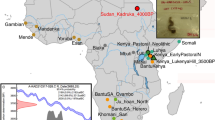Abstract
To determine the value of an art piece, authenticity of the artwork must be verified. We demonstrate here a genetic approach to determine origin of a historic relic in the museum piece. We tested two hair shafts of unknown origin framed into a watercolor portrait of Tsesarevich Alexei Romanov, son of the last Russian Tzar Nicholas II, which is a unique item kept in the State Historical Museum. Genetic identification of the hair shafts was performed by analysis of mitochondrial DNA (mtDNA) markers using both massive parallel genomic sequencing and multiplex targeted PCR, followed by Sanger sequencing. In previous works, we reconstructed the complete mtDNA sequence inherited to Alexei Romanov through the Queen Victoria lineage [Rogaev et al. (2009) Proc. Natl. Acad. Sci. USA, 106, 5258-5263]. DNA extracts were obtained from the two thin hair shafts and used for comparative genetic analysis. Despite the very low quantity and quality of the DNA templates retrieved from the historical single hair shaft specimen, informative mtDNA sequences were determined. The mtDNA haplotype in the hair shafts corresponds to the mtDNA haplotype of Tsarevich Alexei, his sisters, and his mother, Empress Alexandra Feodorovna. This haplotype remains unique in the currently available mtDNA databases. Our results reveal that the hair relic from the portrait is associated with the family of the last Russian Emperor Nicholas II. The study is an example of first application of the genetic methodology for verification of the value of museum artwork items.






Similar content being viewed by others
Abbreviations
- LR:
-
likelihood ratio
- mtDNA:
-
mitochondrial DNA
References
Pfeiffer, H., Hühne, J., Ortmann, C., Waterkamp, K., Brinkmann, B. (1999) Mitochondrial DNA typing from human axillary, pubic and head hair shafts – success rates and sequence comparisons, Int. J. Legal Med., 112, 287-290, https://doi.org/10.1007/s004140050251.
Graham, E. A. M. (2007) DNA reviews: ancient DNA, Forensic Sci. Med. Pathol., 3, 221-225.
Brandhagen, M. D., Loreille, O., and Irwin, J. A. (2018) Fragmented nuclear DNA is the predominant genetic material in human hair shafts, Genes (Basel), 9, 640, https://doi.org/10.3390/genes9120640.
Bengtsson, C. F., Olsen, M. E., Brandt, L. Ø., Bertelsen, M. F., Willerslev, E., et al. (2012) DNA from keratinous tissue. Part I: hair and nail, Ann. Anat., 194, 17-25, https://doi.org/10.1016/j.aanat.2011.03.013.
Linch, C. A., Whiting, D. A., and Holland, M. M. (2001) Human Hair histogenesis for the mitochondrial DNA forensic scientist, J. Forensic Sci., 46, 15056J, https://doi.org/10.1520/jfs15056j.
Almeida, M., Betancor, E., Fregel, R., Suárez, N. M., and Pestano, J. (2011) Efficient DNA extraction from hair shafts, Forensic Sci. Int. Genet. Suppl. Ser., 3, E319-E320, https://doi.org/10.1016/j.fsigss.2011.09.022.
Müller, K., Klein, R., Miltner, E., and Wiegand, P. (2007) Improved STR typing of telogen hair root and hair shaft DNA, Electrophoresis, 28, 2835-2842, https://doi.org/10.1002/elps.200600669.
Desmyter, S., Bodner, M., Huber, G., Dognaux, S., Berger, C., et al. (2016) Hairy matters: MtDNA quantity and sequence variation along and among human head hairs, Forensic Sci. Int. Genet., 25, 1-9, https://doi.org/10.1016/j.fsigen.2016.07.012.
Budowle, B., Allard, M. W., Wilson, M. R., and Chakraborty, R. (2003) Forensics and mitochondrial DNA: applications, debates, and foundations, Annu. Rev. Genomics Hum. Genet., 4, 119-141.
Allen, M., Engström, A.-S., Meyers, S., Handt, O., Saldeen, T., (1998) Mitochondrial DNA sequencing of shed hairs and saliva on robbery caps: sensitivity and matching probabilities, J. Forensic Sci., 43, 16169J, https://doi.org/10.1520/jfs16169j.
Irwin, J. A., Saunier, J. L., Strouss, K. M., Sturk, K. A., Diegoli, T. M., (2007) Development and expansion of high-quality control region databases to improve forensic mtDNA evidence interpretation, Forensic Sci. Int. Genet., 1, 154-157, https://doi.org/10.1016/j.fsigen.2007.01.019.
Just, R. S., Scheible, M. K., Fast, S. A., Sturk-Andreaggi, K., Röck, A. W., et al. (2015) Full mtGenome reference data: development and characterization of 588 forensic-quality haplotypes representing three U. S. populations, Forensic Sci. Int. Genet., 14, 141-155, https://doi.org/10.1016/j.fsigen.2014.09.021.
McElhoe, J. A., Holland, M. M., Makova, K. D., Su, M. S. W., Paul, I. M., (2014) Development and assessment of an optimized next-generation DNA sequencing approach for the mtgenome using the Illumina MiSeq, Forensic Sci. Int. Genet., 13, 20-29, https://doi.org/10.1016/j.fsigen.2014.05.007.
Gansauge, M.-T., Gerber, T., Glocke, I., Korlevic, P., Lippik, L., (2017) Single-stranded DNA library preparation from highly degraded DNA using T4 DNA ligase, Nucleic Acids Res., 45, e79, https://doi.org/10.1093/nar/gkx033.
Schubert, M., Lindgreen, S., and Orlando, L. (2016) AdapterRemoval v2: rapid adapter trimming, identification, and read merging, BMC Res. Notes, 9, 88, https://doi.org/10.1186/s13104-016-1900-2.
Li, H., and Durbin, R. (2009) Fast and accurate short read alignment with Burrows–Wheeler transform, Bioinformatics, 25, 1754-1760, https://doi.org/10.1093/bioinformatics/btp324.
Schubert, M., Ginolhac, A., Lindgreen, S., Thompson, J. F., Al-Rasheid, K. A. S., et al. (2012) Improving ancient DNA read mapping against modern reference genomes, BMC Genomics, 13, 178, https://doi.org/10.1186/1471-2164-13-178.
Jónsson, H., Ginolhac, A., Schubert, M., Johnson, P. L. F., and Orlando, L. (2013) mapDamage2.0: fast approximate Bayesian estimates of ancient DNA damage parameters, Bioinformatics, 29, 1682-1684, https://doi.org/10.1093/bioinformatics/btt193.
Rogaev, E. I., Grigorenko, A. P., Moliaka, Y. K., Faskhutdinova, G., Goltsov, A., et al. (2009) Genomic identification in the historical case of the Nicholas II royal family, Proc. Natl. Acad. Sci. USA, 106, 5258-5263, https://doi.org/10.1073/pnas.0811190106.
Holland, M. M., and Parsons, T. J. (1999) Mitochondrial DNA sequence analysis – validation and use for forensic casework, Forensic Sci. Rev., 11, 21-50.
Acknowledgments
The authors are grateful to Evgeny Lukianov and Alexey Levykin from the State Historical Museum for providing material, support, and illustration of the portrait.
Funding
The research was supported, in part, by the Ministry of Science and Higher Education of the Russian Federation, system number 075-10-2020-116 (grant no. 13.1902.21.0023) (development of the ancient DNA methodology for genomic sequencing and analysis).
Author information
Authors and Affiliations
Corresponding author
Ethics declarations
The authors declare no conflicts of interest. This article does not contain any studies involving human participants or animals performed by any of the authors.
Rights and permissions
About this article
Cite this article
Andreeva, T., Manakhov, A., Kunizheva, S. et al. Genetic Evidence of Authenticity of a Hair Shaft Relic from the Portrait of Tsesarevich Alexei, Son of the Last Russian Emperor. Biochemistry Moscow 86, 1572–1578 (2021). https://doi.org/10.1134/S0006297921120063
Received:
Revised:
Accepted:
Published:
Issue Date:
DOI: https://doi.org/10.1134/S0006297921120063




